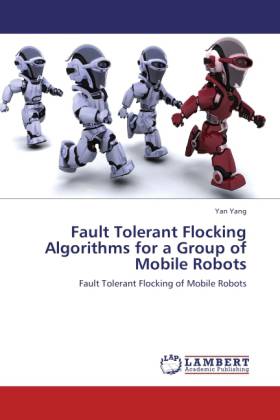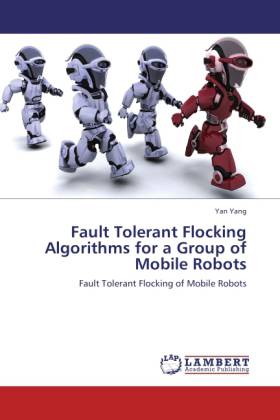
- Afhalen na 1 uur in een winkel met voorraad
- Gratis thuislevering in België vanaf € 30
- Ruim aanbod met 7 miljoen producten
- Afhalen na 1 uur in een winkel met voorraad
- Gratis thuislevering in België vanaf € 30
- Ruim aanbod met 7 miljoen producten
Zoeken
Fault Tolerant Flocking Algorithms for a Group of Mobile Robots
Fault Tolerant Flocking of Mobile Robots
Yan Yang
Paperback | Engels
€ 48,45
+ 96 punten
Omschrijving
Recently, robotics research has been gained a lot of attentions, due to its wide applications, especially in some places that human beings cannot survive, like in a planet or fire. Flocking, as one of important applications of coordination of multiple robots, has a lot of applications. Our research goal is to achieve the effective coordinated flocking even with the crash of mobile robots. First, we proposed a fault tolerant flocking in an asynchronous model. Our algorithm ensures that the crash of faulty robots does not bring the formation to a permanent stop, and that the correct robots are thus eventually allowed to reorganize and continue moving together. We further design a new method by allowing the formation to move to any direction, including rotation, yet in a semi-synchronous model. We analyze the self-stabilization of our fault tolerant flocking algorithms when the memory of robots may corrupt. Finally, we propose a non-fault tolerant flocking algorithm in order to compare the performance with the above fault-tolerant ones. The described algorithm can effectively adapt to the environment to avoid the collision among robots and obstacles.
Specificaties
Betrokkenen
- Auteur(s):
- Uitgeverij:
Inhoud
- Aantal bladzijden:
- 108
- Taal:
- Engels
Eigenschappen
- Productcode (EAN):
- 9783846519189
- Verschijningsdatum:
- 30/09/2011
- Uitvoering:
- Paperback
- Formaat:
- Trade paperback (VS)
- Afmetingen:
- 152 mm x 229 mm
- Gewicht:
- 167 g

Alleen bij Standaard Boekhandel
+ 96 punten op je klantenkaart van Standaard Boekhandel
Beoordelingen
We publiceren alleen reviews die voldoen aan de voorwaarden voor reviews. Bekijk onze voorwaarden voor reviews.











